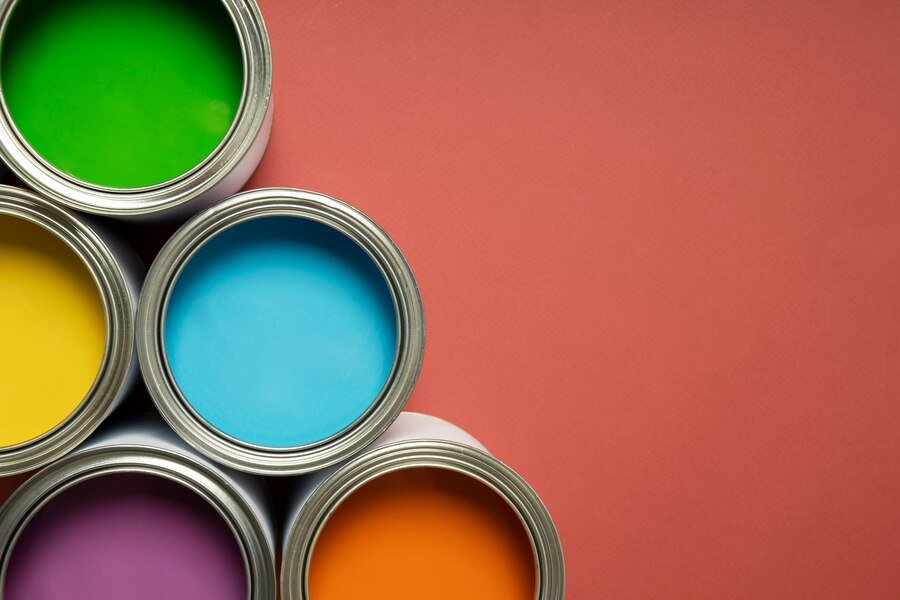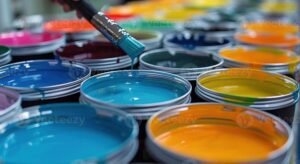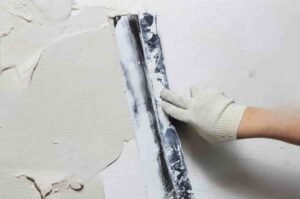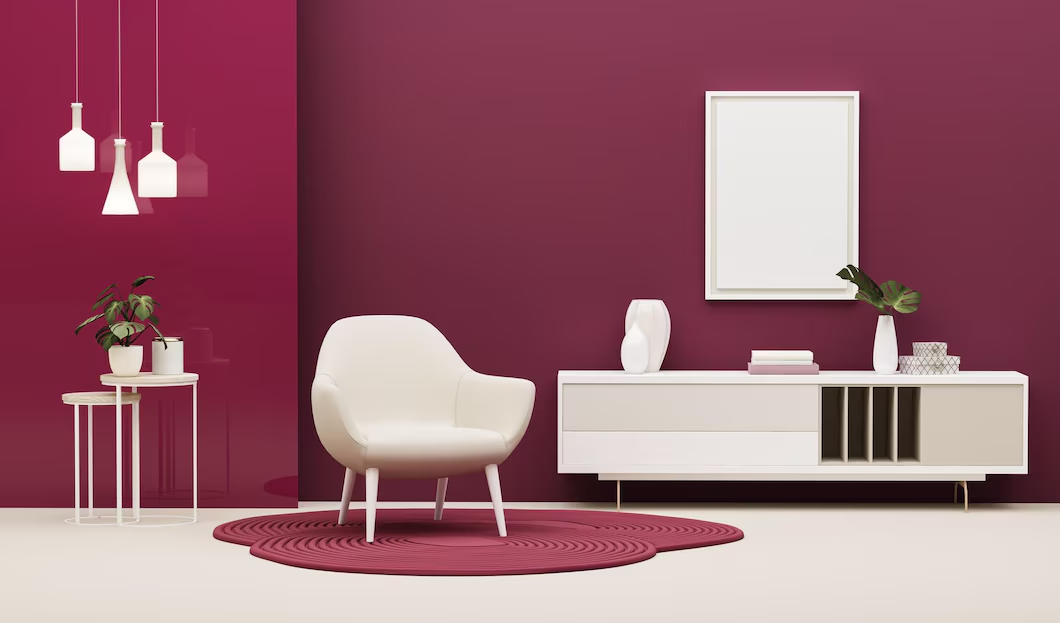What are Emulsion Paints?
Emulsion paints are a type of water-based paint which comprises a combination of pigments, binders, and water. The binders, often made from synthetic resins or latex, play a crucial role in holding the pigment particles together and adhering them to the surface being painted. Unlike oil-based paints that utilize solvents, emulsion paints are known for their quick drying times and lower levels of volatile organic compounds (VOCs), making them a safer option for indoor use.
The water-based nature of emulsion paints allows for easier application and cleanup. As a result, they are favored in both residential and commercial settings. In contrast to oil-based paints, which require solvents for thinning and cleaning up, emulsion paints can be easily diluted with water, making them more user-friendly. Additionally, the absence of strong chemical odors means that spaces painted with emulsion can be occupied sooner after application.
One of the defining characteristics of emulsion paints is their versatility. They can be used on a variety of surfaces, including walls, ceilings, and even on wood and metal with the appropriate primer. The pigments used in emulsion paints give them vibrant colors and finishes, ranging from matte to gloss, allowing for a wide array of aesthetic choices. Moreover, these paints provide excellent coverage, with fewer coats generally required compared to other paint types.
In terms of performance, emulsion paints are water-resistant, but their durability may vary depending on the specific formulation and finish. For instance, while standard emulsion paints may not be suitable for high-moisture environments, specialized formulations exist to enhance their resilience in such areas. This adaptability further highlights the advantages of using emulsion paints for various applications, both interior and exterior, providing homeowners with a functional and aesthetically pleasing solution.

Types of Emulsion Paints
Emulsion paints have gained immense popularity among both professionals and DIY enthusiasts due to their versatility and ease of application. Understanding the different types of emulsion paints is crucial to selecting the right one for a specific project. Among the most common finishes are matte, silk, and eggshell, each offering distinct properties suited for various applications.
Matte emulsion paints are known for their non-reflective finish, which creates a soft and subtle look. They effectively hide imperfections on surfaces and are ideal for areas where a cozy atmosphere is desired, such as bedrooms and living rooms. However, matte finishes can be less durable and more challenging to clean, making them less suitable for high-traffic areas or spaces prone to moisture, like kitchens and bathrooms.
Silk emulsion paints, on the other hand, are recognized for their smooth, glossy finish that reflects light, adding brightness to any room. This type of emulsion paint is highly durable and easy to clean, making it an excellent option for walls in high-traffic areas and spaces like children’s rooms or dining areas. Silk paint also performs well in humid environments, making it suitable for bathrooms and kitchens, provided proper ventilation is maintained.
Eggshell finishes sit between matte and silk; they offer a subtle sheen with better durability than matte paints. Eggshell emulsion paints balance aesthetics and practicality, making them ideal for living rooms and dining areas where a touch of elegance is desired without the high maintenance of a glossy finish. They can also be used on a variety of surfaces, providing flexibility in design while ensuring durability.
Moreover, some emulsion paints are specifically formulated for unique surfaces, such as ceilings or bathrooms. These specialty paints often include additives that enhance their performance under specific conditions. Understanding the characteristics of each type of emulsion paint will aid in making informed decisions suitable for any project. Choosing the right type can significantly impact the aesthetics and functionality of the space, ultimately enhancing the overall ambiance.

Benefits of Using Emulsion Paints
Emulsion paints are widely recognized for their numerous advantages, making them a preferred choice for many homeowners and professionals alike. One of the most significant benefits of using emulsion paints is their quick-drying properties. Unlike traditional oil-based paints, emulsion paints typically dry within a few hours, allowing for faster project completion and reducing the overall downtime needed to utilize a space.
Another notable advantage is the low levels of volatile organic compounds (VOCs) present in most emulsion paints. VOCs can negatively impact indoor air quality, contributing to health issues such as headaches and respiratory problems. By opting for low-VOC emulsion paints, consumers can create a healthier living environment, making these products an excellent choice for families and individuals with sensitivities or allergies.
The ease of application associated with emulsion paints is another compelling reason to consider them. These paints can be effortlessly applied using brushes, rollers, or sprayers, making the task suitable for both amateur and professional painters. Their smooth application ensures a uniform finish, which can enhance the aesthetic appeal of walls and ceilings.
Additionally, emulsion paints are highly washable, which allows for easy maintenance. Their resistance to stains and dirt makes it simple to clean surfaces without compromising the integrity of the finish. This property is particularly beneficial in high-traffic areas or rooms prone to spills and scuffs, ensuring that the walls remain looking fresh and vibrant for longer.
With these combined benefits, including quick drying, low VOC levels, ease of application, and washability, emulsion paints prove to be a practical solution for enhancing and maintaining any space. Ultimately, their attributes contribute to both improved aesthetics and a healthier living environment.
How to Prepare Surfaces for Emulsion Painting
Proper surface preparation is a crucial step in achieving a successful emulsion paint application. It ensures that the paint adheres well and results in a smooth, long-lasting finish. Here is a step-by-step guide to effectively prepare your surfaces before applying mithila paints or any other emulsion paint.
The first step involves cleaning the surface to remove dust, dirt, and grease. Use a damp cloth or sponge with a mild detergent solution to wipe down the area. For surfaces with heavy contamination, such as kitchen walls, a stronger cleaner may be required. Allow the surface to dry completely before proceeding to the next step.
Once the surface is clean, inspect it for any imperfections such as holes, cracks, or peeling paint. Use a putty knife to fill small holes or cracks with a suitable filler. After the filler has dried, sand the area smooth to ensure it is flush with the surrounding surface. For larger repairs, consider using a patching compound, which will provide a stronger and more durable finish.
Next, you should sand the entire surface lightly with fine-grit sandpaper. This step helps to create a textured surface that will promote better adhesion for mithila paints. Be sure to remove any dust created from sanding using a vacuum or a damp cloth.
Priming is another vital step in surface preparation. Applying a primer is particularly important for porous or stained surfaces, as it creates a barrier that prevents the paint from absorbing unevenly. Choose a primer that is compatible with your chosen emulsion paint. Allow the primer to dry according to the manufacturer’s instructions before proceeding with the application of the actual paint.
By following these essential steps—cleaning, repairing, sanding, and priming—you will set the stage for a beautifully painted surface that showcases the quality and vibrancy of mithila paints.

Application Techniques for Emulsion Paints
When it comes to applying emulsion paints, several techniques can be utilized to achieve the best results. The most common methods include brushing, rolling, and spraying, each offering unique advantages suited for various surfaces and textures. Understanding these techniques enables homeowners and professionals to select the appropriate application method for their specific project.
Brushing is one of the most traditional methods and remains popular due to its precision. It is particularly effective for small areas, intricate detailing, and edges. Using a high-quality brush can help in applying mithila paints smoothly, ensuring even coverage. Artists and decorators also appreciate the versatility of brushes when working with textured surfaces, allowing them to create different finish effects. However, this method can be time-consuming for larger areas compared to others.
Rolling, on the other hand, is a faster technique suited for larger wall spaces. A roller cover can hold ample paint and spread it quickly, making it an efficient choice for applying emulsion paints on flat surfaces. The key to achieving a professional finish with this technique lies in the pressure applied while rolling and ensuring even distribution. For corners and edges, a brush can be used in conjunction with a roller to maintain a neat appearance.
Spraying is another effective method, providing an even coat that can cover intricate textures without much overspray. It is popular among professionals who require a smooth finish across extensive areas. However, proper equipment and safety precautions are essential due to the fine mist generated during spraying. When using mithila paints, ensure that the paint is suitable for spray application to maintain desired results.
In conclusion, each technique for applying emulsion paints has its benefits and suitability based on the project at hand. By selecting the right method and applying some handy tips, one can achieve a polished finish that enhances the overall aesthetic of the surrounding space.
Choosing the Right Emulsion Paint Color
Selecting the appropriate color for emulsion paints is a critical decision that can significantly impact the ambiance of your space. Color influences not only the aesthetic appeal but also the psychological state of its occupants. For instance, warm tones such as reds and oranges can evoke feelings of warmth and energy, while cooler hues like blues and greens often promote tranquility and relaxation. Understanding these psychological impacts is essential when aiming to create a desired atmosphere within your environment.
Furthermore, the perception of space can also be altered through color choices. Lighter shades tend to make a room feel larger and airier, whereas darker hues can create a more intimate and cozy atmosphere. This is particularly important in smaller rooms where space optimization is crucial. Additionally, the harmony of colors in your overall design scheme can enhance the visual flow and cohesiveness of your living areas. Employing complementary colors or analogous palettes will ensure a well-balanced aesthetic that is pleasing to the eye.
When choosing colors for emulsion paints, it is advisable to match the shades with existing furnishings and decor elements to maintain design consistency. Testing samples on your walls before making a final decision is a practical step to evaluate how the color interacts with your specific lighting conditions throughout the day. Furthermore, staying abreast of current color trends can guide your selection process, ensuring that your choices align with contemporary aesthetics. Websites, paint magazines, and design blogs often highlight popular colors that harmonize well with varied styles and tastes.
In conclusion, the selection of emulsion paint colors is not merely a choice of hue but a thoughtful process that encompasses psychological factors, spatial perception, design harmony, and current trends. A well-considered decision will undoubtedly enrich your spaces, creating an ambiance that reflects your personality and design aspirations.

Caring for Emulsion Painted Surfaces
Emulsion paints offer exceptional aesthetic appeal and durability, making them a popular choice for both interior and exterior surfaces. To ensure that your surfaces retain their pristine appearance and quality, regular maintenance is paramount. Proper care not only preserves the visual appeal of mithila paints but also extends their lifespan, protecting your investment in both time and resources.
The initial step in maintaining emulsion-painted surfaces is regular cleaning. Dust and dirt accumulation can dull the finish, so use a soft cloth or a feather duster to regularly wipe surfaces free of debris. For more thorough cleaning, a solution of mild soap and water can be employed. It is advisable to use a non-abrasive sponge to prevent the paint from wearing away. When cleaning, be sure to work gently to avoid damage to the paint film.
In cases where the surface experiences scuff marks or stains, it’s important to address these blemishes promptly. For small touch-ups, use a small brush to apply the same emulsion paint to the affected area. If you have leftover paint from the original job, this will help ensure color consistency. For those without leftover material, obtaining the exact shade from the paint supplier is essential to maintain the integrity of the design.
Utilizing appropriate cleaning products is critical for maintaining the quality of mithila paints. Avoid harsh chemicals and abrasive cleaners, as they can damage the paint finish. Instead, opt for pH-neutral cleaners specifically designed for painted surfaces. Additionally, consider implementing a regular maintenance schedule, which includes cleaning and inspection of painted areas, to effectively prolong the longevity of your emulsion-painted surfaces.
Common Problems and Solutions with Emulsion Paints
Emulsion paints are widely appreciated for their versatility and ease of use. However, both DIY enthusiasts and professional painters occasionally encounter problems that can compromise the finish and longevity of their work. One common issue is peeling paint, which can occur due to insufficient surface preparation or the application of paint on wet or contaminated surfaces. To remedy this, it is essential to scrape away the peeling paint, clean the surface thoroughly, and allow it to dry completely before applying a new coat of mithila paints.
Another frequently encountered problem is cracking. Cracking often arises when the paint dries too quickly, usually due to high temperatures or low humidity. To prevent this, it is advisable to use a paint additive that slows down drying time or paint during cooler parts of the day. If cracking has already occurred, the affected area should be sanded down and repainted after applying a quality primer designed for mithila paints.
Blistering is yet another complication that homeowners may face when using emulsion paints, which typically results from moisture trapped beneath the paint layer. Ensuring the surface is completely dry before painting is vital, and using breathable paints can help mitigate this issue. If blisters appear, they should be punctured and smoothed out, after which the area must be properly dried before repainting with a suitable emulsion paint.
To sum up, understanding these common problems associated with emulsion paints is crucial for successful application and maintenance. By proactively addressing issues such as peeling, cracking, and blistering, one can ensure a smooth and visually appealing finish, while extending the lifespan of the paint job. With the right preparatory steps and knowledge of solutions, using mithila paints can remain a rewarding endeavor.

Conclusion: Emulsion Paints for Your Next Project
In reviewing the myriad benefits associated with emulsion paints, it becomes clear that these coatings offer a practical and aesthetic solution for various painting endeavors. Emulsion paints are noted for their versatility, making them suitable for walls, ceilings, and even furniture. Their water-based formulation contributes not only to their ease of application but also allows for quick drying, which can significantly expedite project timelines. Furthermore, emulsion paints emit fewer volatile organic compounds (VOCs) during and after application, making them a more environmentally friendly option compared to traditional oil-based paints, thus supporting healthier living spaces.
Another advantage that deserves attention is the extensive range of finishes and colors available, enabling homeowners to achieve their desired style without compromise. From matte to gloss finishes, emulsion paints can enhance both contemporary and traditional decor, allowing for personalization that reflects unique tastes. Moreover, the trend towards using mithila paints, with their intricate designs and rich cultural heritage, exemplifies how emulsion paints can transcend mere functionality, infusing artistic expression into home aesthetics.
When contemplating your next home improvement project, emulsion paints should undoubtedly be a major consideration. Their adaptability to various surfaces, ease of maintenance, and vibrant color options present an enticing package for any homeowner or professional. It is advisable to explore the specific properties of different types of emulsion paints, including washability and durability, to ensure that you select the best fit for your project requirements. Additionally, tapping into resources and expert tips on paint selection can further enhance your outcome. In doing so, you will not only achieve a visually appealing environment but also contribute positively to your living space’s overall well-being.


